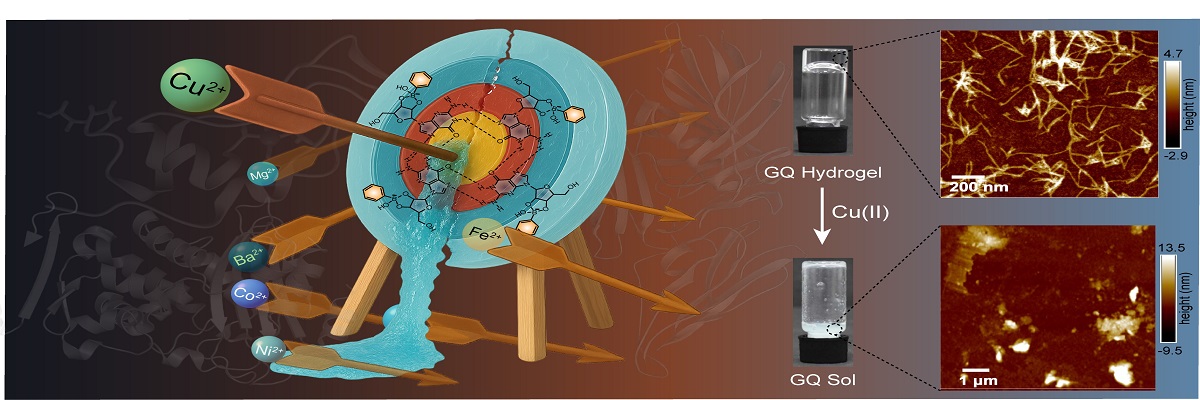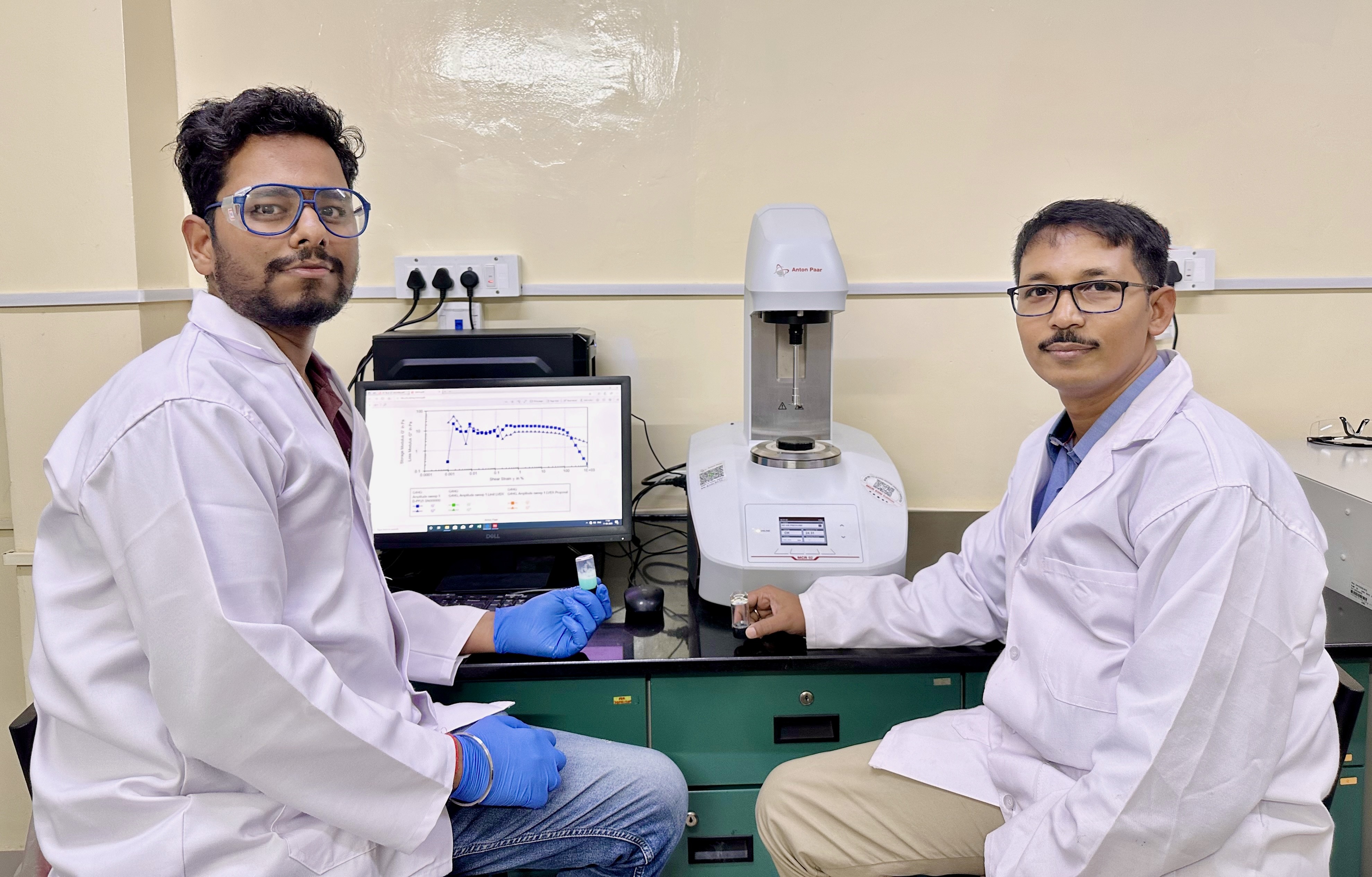Copper-sensitive hydrogel for targeted drug delivery
– Aishwarya Segu

Left: Schematic representation of G-quadruplex-based hydrogel from guanosine and phenylboronic acid that exhibits exclusive selectivity for Cu(II) ions, with Cu(II) inducing a rapid gel-to-sol transition, enabling highly sensitive detection in biological media. Right: AFM images reveal how copper breaks down the GQ hydrogel’s nanofibers, enabling precise detection in water and biorelevant media (Image courtesy: Abhay Srivastava and Subinoy Rana)
Scientists at the Materials Research Centre, IISc, led by Subinoy Rana, have engineered a hydrogel that rapidly transitions from the gel to solution stage (gel-to-sol) upon exposure to copper [Cu(II)] ions. Such a material has potential applications in targeted drug delivery and diagnostics.
The design of the hydrogel was inspired by biology. It contains guanosine, a nucleic acid present in our DNA, as well as phenylboric acid, together forming what the team calls a GQ hydrogel. When copper ions are added to the hydrogel, the GQ hydrogel disassembles, transitioning from gel to sol state within minutes.
As the gel is highly sensitive to the levels of copper ions, it can aid in diagnosing some conditions. For example, excessive copper ion levels can act as a biomarker for neurodegenerative disorders such as Parkinson’s and Alzheimer’s. The team designed a paper-based GQ hydrogel which can potentially act as a point-of-care diagnostic tool for testing copper ion levels in such disorders.
The team was also able to use the hydrogel for targeted drug delivery. The researchers incorporated L-dopa (also known as Levodopa), a drug used in Parkinson’s disease treatment, into the hydrogel. Upon exposure to relatively higher levels of Cu(II), the hydrogel releases L dopa in a controlled and sustained manner. This dual functionality underscores the versatility of the hydrogel.
Such an innovative approach paves the way for the development of responsive biomaterials capable of specific drug delivery, marking a significant step forward in the design of biomimetic materials for targeted drug delivery.

Lead author Abhay Srivastava (left) and advisor Subinoy Rana (right) (Photo courtesy: Abhay Srivastava and Subinoy Rana)
REFERENCE:
Srivastava A, Gupta K, Solra M, Jindal G, Rana S, Exclusive Cupric Ion Specificity of Gel Sol Transition Enables Efficient Sensing and Therapeutic Delivery, Small (2025).
https://onlinelibrary.wiley.com/doi/10.1002/smll.202501453
LAB WEBSITE:
https://www.subinoyranagroup.com





